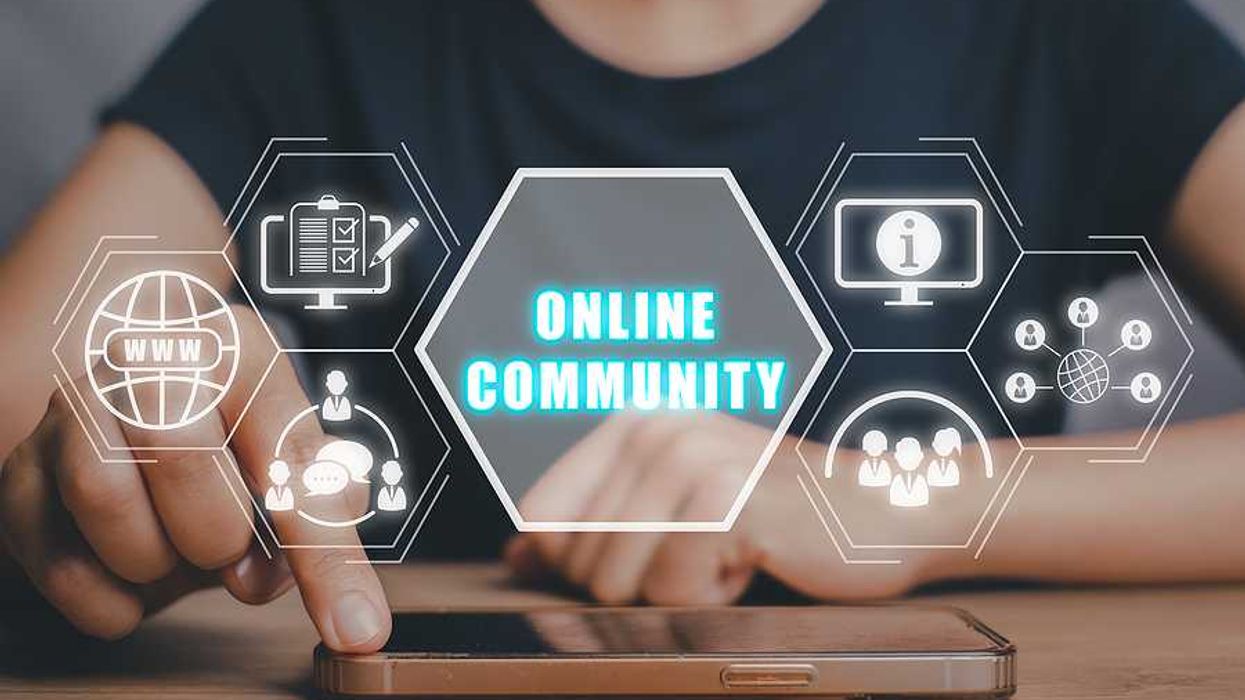
As CEOs ascend to the top of their organizations, many find themselves grappling with a paradoxical challenge: isolation. Despite being surrounded by teams and board members, a CEO can often feel remarkably alone in their decision-making process. This solitude, while not always apparent on the surface, carries significant risks that extend beyond the individual to the entire company.
In this article, Work It Daily experts from Vistage delve into the risks and negative business impact of CEO isolation. Read on to discover how CEOs can avoid isolation and implement practical strategies for fostering greater engagement, communication, and inclusivity within their organization.
Mike Thorne
“Mike, the team just doesn’t get it. They cannot see the big picture. I just need them to be accountable.”
How many times do you hear this or say it if you are a CEO? It's worth asking yourself, "What role am I playing in this story?" You may not like the answer but I am confident it will unlock you, your organization, and, ultimately, your happiness at home, work, and in your community.
So often business owners and CEOs self-isolate themselves without even realizing it. Their heavy workload and ultimate belief that they are wholly responsible for everything is too much burden for one person. There is no doubt they feel without them the stability and overall sustainability of the business won’t work.
This leads to two main outcomes: (1) lack of time to truly reflect, invest time in connecting with peers, and socialize, and (2) fear of delegation. The common issue as a CEO/business owner (fear of delegation) gets overwhelming the longer they fail to ask for help. Employees end up complying but are not committed because they wait for the “boss” to decide. It is a vicious cycle.
A few quick ideas to help:
1. Set boundaries at work. Allocate time for relaxation, exercise, or a hobby. Try one hour a week and grow from there. CEOs need to pay ATTENTION to where their time is spent.
2. Outsource non-core functions. Start to look at your leadership team as competent vs. only you can do it. Find a few things you would love to get off your plate and test a key leader with the work. You will build confidence and it will expand your capacity AND the organization's when you do.
3. Join peer groups. It is crucial to have people who are not involved directly with the business. They can provide a perspective you don’t have but they also “understand” what you are up against.
We often think we need to revolutionize how we operate when a few quick wins will give us the courage and confidence to take action.
Remember reality always wins, always.
Mike Thorne is a former CEO and current Vistage Chair. He leads and facilitates a group of trusted advisor entrepreneurs and a CEO peer group in New Hampshire and Maine.
Kirsten Yurich

Image from Bigstock
To be a leader is to be isolated.
Leaders are constantly surrounded by people—yet don’t “BELONG” anywhere, truly.
Yet, an isolated leader is a dangerous leader.
Leaders can be isolated in many different ways. Each way has unique and negative consequences both for the leader and for the business and its employees.
For example, a leader could be isolated from their employees. In this case, they are unaware of the real issues and experiences happening within their company. These leaders think the company culture is great and struggle to understand why they have such a big turnover issue! Or perhaps they are so out of touch with employee needs and preferences that they are making decisions that actually hurt productivity and morale.
A leader could be isolated from reality. They could spend so much time IN the business (working on minutia or micromanaging their team) that they are not looking around corners for the business or paying attention to the market shifts and trends. The business becomes outdated and irrelevant.
A leader could be isolated socially. They are lonely. Leaders don’t have a true group to belong to at the office. Relationships are always clouded by the authority imbalance. You may have to fire a "friend." That will always put a damper on a relationship. This can create some moderate if not extreme depression.
A leader could be isolated intellectually. The pressure to perform and to be "always on" often results in leaders placing their own professional development needs last. This can isolate them from growing in areas both inside their industries as well as professionals and leaders in general. Leaders with limited learning are stunting their effectiveness. They MUST find peers outside their company to learn from. Peer advisory groups are a place to validate their thinking, have their decisions and actions questioned in safe ways (without risking their job, reputation, etc.), and gain the perspective and collective wisdom of other leaders outside their industry.
Will it always be this way?
How can leaders overcome the inevitability of isolation? It’s possible. But it starts in your head.
Clarifying the vision or version of the leader YOU want to be is the place to start. What do you value, specifically? List it out! Your mindset and beliefs about what a leader IS (what she/he creates) will always drive your behaviors and choices.
If you believe a leader never shows weakness or vulnerability, then me suggesting a strategy of creating psychological safety through shared vulnerability with your team will fail because deep down inside you don’t believe that’s how leaders should behave. You won’t be able to do it. So don’t even try.
The strategies you select must align with the leadership values you hold (or those you aspire to hold).
- Be present with your employees in organic and authentic ways. Show up at events, meetings, and celebrations just to see and be seen.
- Spend time doing the work that only YOU can do. Evaluate your current contributions to the company—realign as necessary. Delegate those that can be accomplished by others. For top leaders, spend 50% of your time outside the company building relationships.
- Build a strong social network with people who do not work at the company. Have a hobby, creative if possible.
- Be active. Exercise and sleep for executives are extremely important. The more cognitively challenging the job, the more important these disciplines are for your performance.
- Regularly be part of peer-to-peer experiences where you are able to have your thinking challenged and wrestle with important issues with other leaders. Exposure to other ways of thinking enhances your analytical and problem-solving skills.
Isolation is inevitable in leadership. But its negative effects can be mitigated and managed with a proactive approach across the several domains listed above.
Kirsten Yurich is a former CEO and current Vistage Chair. As a clinician, professor, author, and executive, she leverages this unique blend and creates learning environments for executives to become better leaders, spouses, and parents.
Mark Fackler

Image from Bigstock
For me, the problem of isolation started in an instant.
One day I was an employee, the next I was an isolated CEO. I quit a job to voluntarily go down a path all alone and was not sure what was in front of me. My personality, like most founders, has curiosity and risk-taking. There was probably a bit of courage, but naiveté can alleviate the need for courage. What’s the worst that can happen, I lose my house? Who cares.
But as you go down this founder’s path, isolation builds. Alongside the growing isolation are growing problems. The funny, or not-so-funny, thing about the problems is that they grow in number and grow in consequence. The always impending failure has a larger and larger impact not on just your life, but the lives of your employees, clients, and vendors. What goes from "What’s the worst that can happen, I lose my house?" becomes the same problem for others who count on you. The isolation builds and hampers CEO productivity.
Solving the isolation problem for those of us willing to admit that isolation is real was actually quite simple for me. I joined a Vistage CEO peer group. After attending a few monthly meetings, I learned how to be open, honest, and vulnerable. I don’t want to trivialize the act of becoming open, honest, and vulnerable, but when I did, the isolation relief came bit by bit. Yes, it is just a bit of relief, but doing so month after month, for me 12 years, provided enough cumulative relief to ride that scary wave, that isolating scary wave, that felt like it was going to crash down on me at any moment.
With that sense of relief and with the peer group, I learned what was necessary to grow the company and to take care of everyone that was counting on me.
Mark Fackler is a retired CEO and currently leads the Vistage CEO group that he was a member of from 1991 to 2002. He is passionate about creating great ROI for his member CEOs.
What's your experience with CEO isolation and its negative business impact? Join the conversation inside Work It Daily's Executive Program.
- Why CEOs Need To Give Employees Purpose Through Their Passion ›
- How To Stay Healthy As An Executive ›
- People vs. Profit: The No. 1 Skill CEOs Lack In The New Purpose-Driven Economy ›
- 3 (Hidden) Costs Of CEO Neglect ›
- How CEOs Can Spot Their Biggest Leadership Weakness - Work It Daily ›
- Proven Strategies For Tackling Remote Work Loneliness ›

 Bigstock
Bigstock Bigstock
Bigstock Bigstock
Bigstock


